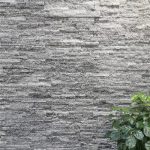The Beauty and Benefits of Stone Veneer Cladding A Comprehensive Guide

Introduction:
Stone veneer cladding is a popular choice for homeowners and architects looking to enhance the aesthetic appeal of a building's exterior or interior. This versatile material provides the look and feel of natural stone at a fraction of the cost and weight. In this comprehensive guide, we will explore the beauty, benefits, installation process, maintenance, and sustainability of stone veneer cladding.
Chapter 1: Understanding Stone Veneer Cladding
1.1 What is Stone Veneer Cladding?
Stone veneer cladding is a thin layer of natural or manufactured stone that is applied to the exterior or interior walls of a building. It is designed to mimic the appearance of traditional full-thickness stone without the weight and cost associated with it. Stone veneer cladding comes in a variety of shapes, sizes, colors, and textures, making it a versatile choice for a wide range of design styles.
1.2 Types of Stone Veneer
There are two main types of stone veneer: natural and manufactured. Natural stone veneer is made from real stone that has been quarried and cut into thin slices. This type of veneer offers the authentic look and feel of natural stone but can be more expensive and labor-intensive to install. Manufactured stone veneer, on the other hand, is made from a mixture of cement, aggregates, and pigments that are poured into molds to create stone-like shapes. This type of veneer is more affordable and lightweight, making it easier to install.
Chapter 2: Benefits of Stone Veneer Cladding
2.1 Aesthetic Appeal
One of the primary reasons homeowners and architects choose stone veneer cladding is for its aesthetic appeal. The rich textures, colors, and patterns of stone veneer can add a touch of luxury and sophistication to any building. Whether you prefer the rugged look of natural stone or the more uniform appearance of manufactured stone, there is a stone veneer option to suit your style.
2.2 Durability
Stone veneer cladding is highly durable and resistant to weathering, fading, and chipping. It can withstand the elements, including rain, snow, and UV exposure, without losing its color or texture. This durability makes stone veneer cladding a long-lasting investment that can enhance the value of your property.
2.3 Versatility
Stone veneer cladding is a versatile material that can be used in a variety of applications, including exterior walls, fireplaces, accent walls, and more. It can be installed on almost any surface, including wood, concrete, and drywall, making it a flexible choice for both new construction and renovation projects.
Chapter 3: Installation Process
3.1 Preparation
Before installing stone veneer cladding, it is important to properly prepare the surface. This may involve cleaning the wall, applying a moisture barrier, and installing metal lath to create a stable base for the veneer. Proper preparation is essential for ensuring a successful installation and long-lasting results.
3.2 Application
The installation of stone veneer cladding typically involves applying a layer of mortar or adhesive to the back of each stone piece and pressing it onto the wall in a staggered pattern. Grout is then applied between the stones to fill in the gaps and create a seamless look. The process can be labor-intensive and time-consuming, especially for large projects, so it is recommended to hire a professional installer for best results.
Chapter 4: Maintenance
4.1 Cleaning
Stone veneer cladding is relatively low-maintenance, but it may require occasional cleaning to remove dirt, debris, and mold. A solution of mild detergent and water can be used to gently scrub the surface of the veneer and restore its original appearance. Avoid using harsh chemicals or abrasive cleaners, as these can damage the stone.
4.2 Sealing
To protect the stone veneer from water damage and staining, it is recommended to apply a sealer periodically. The frequency of sealing will depend on the type of stone veneer and the level of exposure to the elements. Be sure to follow the manufacturer's instructions for the proper application of the sealer.
Chapter 5: Sustainability

5.1 Environmental Impact
Stone veneer cladding is a sustainable choice for environmentally conscious homeowners and architects. Natural stone veneer is a renewable resource that is harvested from quarries in a responsible manner. Manufactured stone veneer is made from recycled materials and requires less energy to produce than natural stone, making it a more eco-friendly option.
5.2 Energy Efficiency
Stone veneer cladding can also contribute to the energy efficiency of a building. The thermal mass of the stone helps regulate indoor temperatures by absorbing and releasing heat, reducing the need for heating and cooling. This can result in lower energy bills and a reduced carbon footprint over time.
Conclusion:
Stone veneer cladding is a beautiful, durable, and versatile material that can enhance the aesthetic appeal and value of any building. Whether veneer stone prefer the authentic look of natural stone or the affordability of manufactured stone, there is a stone veneer option to suit your needs. By understanding the benefits, installation process, maintenance, and sustainability of stone veneer cladding, you can make an informed decision for your next construction or renovation project.
